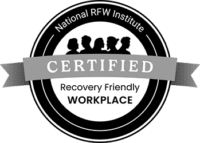The Oral-Systemic Connection: Linking Oral Health and Overall Health
Dr. Judith Haber, PhD, APRN, FAAN
Jessamin Cipollina, MA, GoMo Health
The mouth is the gateway to the rest of the body with oral health directly affecting general health and wellbeing. This oral-systemic connection, although well-documented in decades of research, is an often-neglected component of overall health.
Maintaining good oral health is simple and has the potential to reduce the risk for several health conditions and their side effects. There is a wealth of evidence supporting how poor oral health can exacerbate many acute and chronic health conditions. Conversely, there is significant research that demonstrates how many health conditions, along with neglect of our overall physical and mental health, can have a negative effect on our oral health.
Following are examples of common health conditions that showcase how oral health is deeply and inextricably connected to our overall health.
Diabetes
Diabetes affects more than 38 million people in the United States.1 People with diabetes are at greater risk for oral health problems like gum disease, tooth decay and dry mouth due to elevated blood sugar.2 It is estimated that people with diabetes are two to three times more likely to have periodontal disease than people without diabetes.3 Periodontal disease impairs blood glucose control in persons with diabetes by increasing inflammation in the mouth and throughout the body, which further contributes to insulin resistance and increased risk for clinical complications including retinopathy, neuropathy, nephropathy, heart disease and stroke.2
Improved management of glycemic control and treatment of periodontal disease decreases risk for diabetes-related complications. Maintaining target blood sugar levels and oral health care, including good oral hygiene and regular dental check-ups, can significantly improve oral and overall health outcomes for persons with diabetes.
Cancer
In 2023, there were an estimated 1.9 million new cases of cancer in the United States.4 Cancer treatments, such as chemotherapy, radiation therapy and immunotherapy, cause immunosuppression and increase the risk for bacterial, viral and fungal infections throughout the body. The body, particularly the mouth, becomes more vulnerable and less able to fight off infections during cancer treatment. Cancer therapies can have a severely negative impact on oral health and exacerbate existing and persistent oral health problems.
Treatment of dental problems such as periodontal disease and tooth decay is essential before beginning cancer treatment as untreated problems can delay, interrupt, or even cancel treatment. Severe oral health problems, such as oral mucositis, infections, mouth pain and difficulty swallowing, can negatively affect treatment outcomes by potentially causing treatment delays that increase risk for cancer complications and patient mortality.5
Including dental care and oral hygiene coaching as a part of overall cancer care is crucial throughout cancer treatment to promote positive overall health outcomes and improve quality of life. GoMo Health collaborated with Rutgers Cancer Institute of New Jersey to incorporate oral care management within their patient engagement programs to address challenging oral side effects to their treatment.
Pregnancy
It is safe to have regular dental care during pregnancy and, in fact, studies have demonstrated poor oral health during pregnancy has been associated with several adverse pregnancy outcomes. The bacteria that cause inflammation in the gums can enter the bloodstream and affect the fetus, potentially contributing to pre-term labor and low birth weight.6
Hormonal changes that occur during pregnancy can cause oral health problems. During pregnancy, individuals may be more prone to oral health conditions including gingivitis, gum disease, and cavities. An estimated 60-75% of pregnant people have gingivitis, and 1 in 4 people have untreated cavities during pregnancy.7There is also evidence that oral health of parents impacts their children’s oral health: children of parents with high rates of untreated cavities or tooth loss are more than three times as likely to have cavities in childhood.7 Maintaining regular home oral care during pregnancy is key to promoting a healthy birth and lifelong good oral health for parents and children.
Mental Health
Poor mental health is also shown to be linked to poor oral health. An estimated 57.8 million people in the United States experience mental health issues.8 People who suffer from mental health conditions, including anxiety, depression, and mood and psychotic disorders, may be at higher risk of developing oral health problems like tooth erosion, cavities and gum disease.
Side effects of medications used to treat mental health are associated with a higher risk for many oral conditions including dry mouth, tooth decay, infections, periodontal disease, pain and tooth loss. Studies have also suggested that inflammation from gum disease is connected to inflammation in the brain, which potentially increases risk for certain mental health disorders.9
People who struggle with their mental health are also more likely to neglect their oral health.10 Those with mental health conditions may also practice unhealthy coping mechanisms like excessive drinking or smoking that increase the risk for oral health problems, including oral cancer. Insecurities related to their oral health, or anxiety associated with dental visits can contribute to people avoiding necessary dental care. Preventive oral health, such as regular dental check-ups and good home oral hygiene, are critical to minimizing the oral health-related side effects of mental health conditions.
There is no health without oral health.
You cannot have good overall health without good oral health! The separation of the mouth from the rest of the body is reflected in a national health care system that draws a hard line between dental and medical education, clinical practice and healthcare coverage. As a result, barriers to care due to awareness, access, cost and insurance persist for many vulnerable populations. A disproportionate burden of poor oral and overall health is experienced by populations most affected by these barriers to care. There are three fundamentals to preventing oral and overall health problems:
- Maintain good at-home oral health care. This means brushing teeth twice per day with fluoride toothpaste and flossing teeth every day to help prevent oral health problems and keep smiles shining bright.
- Visit your dentist regularly. It is important to see your dentist twice a year for a cleaning and check-up to assess for any potential problems.
- Make good lifestyle choices. Maintaining a healthy diet, avoiding nicotine products and limiting alcohol intake are some actions you can take to promote oral and overall health.
Raising awareness about the oral-systemic connection is essential for reducing health disparities and improving overall health outcomes within your community, your network, and the people you serve. Learn more about the benefits of improving oral health by taking our short survey.
Check out the Know your OQ Survey Today!
Click Here!References:
- Centers for Disease Control and Prevention. National Diabetes Statistics Report. Reviewed November 29, 2023. Accessed February 16, 2024. https://www.cdc.gov/diabetes/data/statistics-report/index.html
- Păunică I, Giurgiu M, Dumitriu AS, et al. The Bidirectional Relationship between Periodontal Disease and Diabetes Mellitus-A Review. Diagnostics (Basel). 2023;13(4):681. doi:10.3390/diagnostics13040681.
- Zhang Y, Leveille SG, Shi L, Camhi SM. Disparities in Preventive Oral Health Care and Periodontal Health Among Adults With Diabetes. Prev Chronic Dis. 2021;18:200594. doi:10.5888/pcd18.200594.
- Siegel RL, Miller KD, Wagle NS, Jemal A. Cancer Statistics, 2023. CA Cancer J Clin. 2023; 73(1): 17-48. doi:10.3322/caac.21763
- Hickam DH, Gordon CJ, Armstrong CE, et al. Efficacy of Dental Services for Reducing Adverse Events in Those Receiving Chemotherapy for Cancer [Internet]. Rockville (MD): Agency for Healthcare Research and Quality (US); 2023 Jul. doi: 10.23970/AHRQEPCRAPIDDENTALCANCER.
- Saini R, Saini S, Saini SR. Periodontitis: A risk for delivery of premature labor and low-birth-weight infants. J Nat Sci Biol Med. 2010;1(1):40-42. doi:10.4103/0976-9668.71672
- Centers for Disease Control and Prevention. Pregnancy and Oral Health. Reviewed March 18, 2022. Accessed February 16, 2024. https://www.cdc.gov/oralhealth/publications/features/pregnancy-and-oral-health.html.
- National Institute of Mental Health. Mental Health. Updated March 1, 2023. Accessed February 16, 2024. https://www.nimh.nih.gov/health/statistics/mental-illness.
- Martínez-García M, Hernández-Lemus E. Periodontal Inflammation and Systemic Diseases: An Overview. Front Physiol. 2021;12:709438. doi:10.3389/fphys.2021.709438.
- Oral Health Foundation. Mental illness and oral health. Accessed February 16, 2024. https://www.dentalhealth.org/mental-illness-and-oral-health







Find Us Online